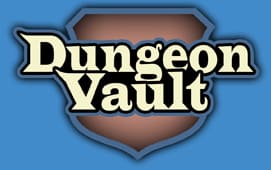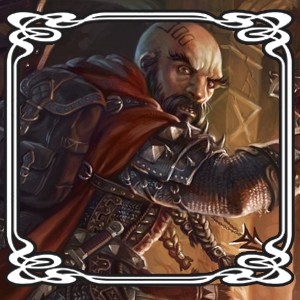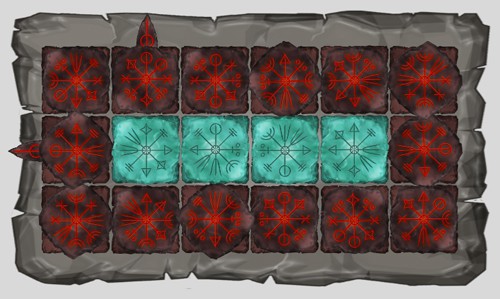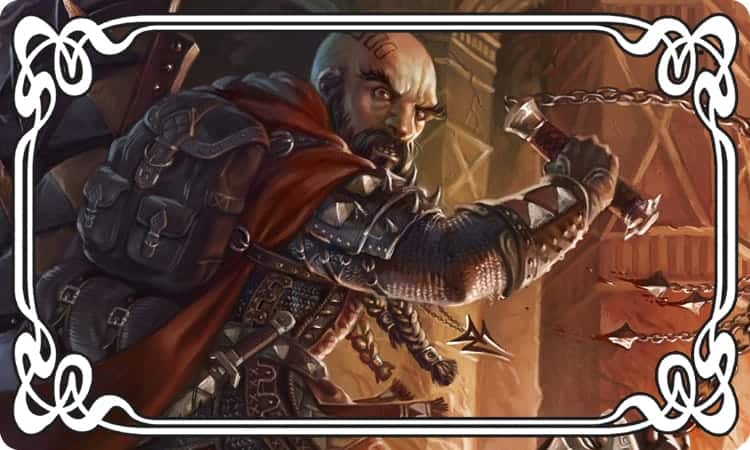
If you are looking to find some Dwarven Puzzles for your D&D game, you’ve come to the right place. In this article I’ll show you my readymade dwarven puzzles and how to create your own custom puzzles for your D&D game.
Create a Dwarven D&D Puzzle
First of all, there is – officially – no such thing as a dwarven puzzle for Dungeons & Dragons or other roleplaying game. So we are going to have to create them ourselves. Here’s my step-by-step plan for doing just that:
- Write down all things dwarven.
- Select a D&D puzzle that matches the dwarven look and lore.
- Create the dwarven puzzle artwork.
- Set up the puzzle in the dwarven environment.
- Introduce the dwarven puzzle to your players.
1. All Things Dwarven for your D&D Puzzle
Since there are no readymade dwarven puzzles, we will need to create a puzzle and flavour it to match dwarven looks and lore. So the obvious place to start is by examining some typical dwarven stuff. A quick brainstorm and internet search reveals the following:
- The concept of dwarfs mainly comes from Norse mythology. In terms of looks and lore, anything derived from ancient Norse mythology will probably work well with your puzzle.
- In D&D dwarves have an affinity with stone, metal, and jewels. Puzzles made from those materials would probably work best.
- There are some references to dwarven runes. So a puzzle that contains runes would work thematically.
- Also, in D&D dwarves in general tend toward having a lawful good alignment and often put their clan before individuality. A puzzle that has a clear rules system would match well with being lawful. And a cooperative puzzle would match well with putting the needs of the group before your own.
So now that we have some ideas for the look and type of puzzle we are looking for, let’s find a puzzle that matches the theme.

2. Select a D&D Puzzle That Matches the Dwarven Look and Lore
For this example I’ve chosen a set of puzzles called Runestone Puzzles that I created a while ago. The Runestone Puzzle has all of the aspects mentioned before. If you don’t want to spend lots of time creating your own puzzle, it’s for sale in the DungeonVault webstore. But I’ll just use it as an example for dwarven puzzle design here.
Runestone Puzzles uses both runes and stone to go with the dwarven theme. The runes are very loosely based on the Vegvisir (pronounced ‘VEGG-vee-seer), a symbol described only in the Huld manuscript, an Icelandic collection of spells compiled during the nineteenth century. I believe the symbol matches dwarven aesthetics really well, and the fact that it represents magic and is surrounded by mystery is just an added bonus.
I don’t like to literally copy symbols taken from real life when I create a fantasy puzzle because those symbols might have a deep spiritual, personal meaning to someone that I’m not aware of. That’s why runestone puzzles are only loosely based on these symbols.
To add an extra bit of lore, let’s give each symbol a specific meaning.
Now that we have the look and lore of the puzzle, it still needs to become an actual playable puzzle. Mechanically, the runes flow in eight directions and its symbols can change on each of those axis. If you have multiple runestones which each have 8 symbols flowing into different directions, you could set a rule that all touching symbols must match; just like dominos. Here’s a picture where all of the symbols in horizontal and vertical direction match.
This puzzle also uses clear rules which matches the lawful alignment and it speaks to the spirit of unity above individuality. Also, players can solve this puzzle cooperatively. Theme wise it fits the dwarven look and lore.
However, mechanically the more dwarven runestones players have, the more difficult this puzzle becomes. Very quickly this puzzle will become too difficult to solve even for a party of four or more players. So let’s fix that. By adding a board to place the stones upon, you can limit possible outcomes. Also adding different colour stones reduces options where they can be placed. And on the outside border I’ve added runestones with just one symbol that players can’t move. That greatly limits the options players have for placing stones which reduces the difficulty level.
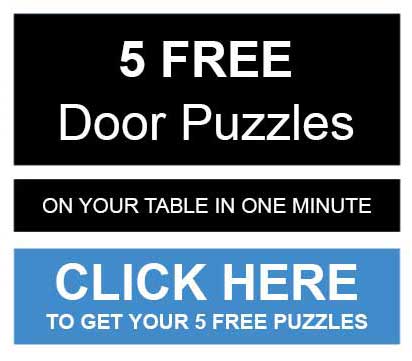

Often when creating a puzzle, you come across these types of mechanical problems. It’s very important to fix those before you present your puzzle to your players. It can be very frustrating to create a beautifully styled D&D puzzle, only to find that your players can’t solve it. Having someone playtest your puzzle is always a good idea.
With this puzzle system you can create an infinite amount of puzzles. Just create a layout where all the pieces match, change up the stone colours to lower the difficulty level, and add some single symbols around the edge if needed. Next, you take a picture with your phone of the solution, remove the movable pieces and presto! Your dwarven D&D puzzle is ready for play.
3. Create the Dwarven Puzzle Artwork
With Runestone Puzzles I’ve already created the artwork for you. But if you wish to create your own dwarven themed puzzle, you’ll have to do this step on your own. Obviously, googling dwarven imagery for inspiration helps. But here are some less obvious tips I’ve found useful:
Make the puzzle pieces two by two inches. This way, they’ll match the table top grid and players can easily hold and manipulate then. And you could place miniatures on top of the puzzle pieces if you really wish to scale it up.
Create physical pieces the players can manipulate. In D&D so much happens in the theatre of the mind. Having a puzzle is one of those rare changes to really go to town with cool props.
If you’re handy with photoshop or a similar program you can create some beautiful artwork. But you can create great looking puzzle pieces by drawing with a fine black marker on thick stock paper and hand colouring with pencil to make each piece unique.
If drawing is not your thing. Ask someone else to do it for you.
4. Set up the Puzzle in the Dwarven Environment
You’ve done all the work in creating a beautiful and thematically correct dwarven puzzle for your D&D game. Now we need to make sure the puzzle makes sense in the adventure or campaign you are running. A couple of questions I always ask myself are:
Who created this puzzle?
Why was it created?
How does the puzzle lore fit into your fantasy world?
What do the characters know about the puzzle lore?
What happens if the characters solve the puzzle?
What happens if the characters fail to solve the puzzle?
Why do the players wish to solve the puzzle?
Who holds the puzzle pieces and why?
What will the characters learn about dwarven culture through this puzzle experience?
If you were able to answer these questions, you should have a clear idea of how your puzzle fits into your world. You know where all the pieces can be found and have described the wonders that players will experience in trying to solve it.

5. Introduce the Dwarven Puzzle to your Players
The last step is figuring out how to introduce your Dwarven puzzle to your players. Figure out how they first learn of the puzzle and what motivates them to find all the puzzle pieces. It could be as simple as: ‘Find all the puzzle pieces in the dwarvenhold to open the door to the dwarven treasure hoard’. Or as complex as: ‘Find a puzzle piece in the heart of each mountain and solve the puzzle to stop the earthquakes.’
Whichever you choose, introducing the puzzle could be the start of a new storyline or adventure. And how you choose to pull back the curtain to slowly reveal the look and lore affects the player experience as much as all the work you’ve done in the previous steps.
In conclusion, these are my five steps to creating a great dwarven puzzle. It’s a lot of work but really rewarding as a DM if you put in the effort. I do have another puzzle called Floor Puzzles which has themed puzzles for Dwarves as well as Elves, Halflings, and Orcs. It comes with a typical dwarven card game and lore, so be sure to check that out as well. And if you simply want all of my puzzles, be sure to check out the Puzzle Bundle.
By Paul Camp
Image credit: Wizards of the Coast, DungeonVault.
